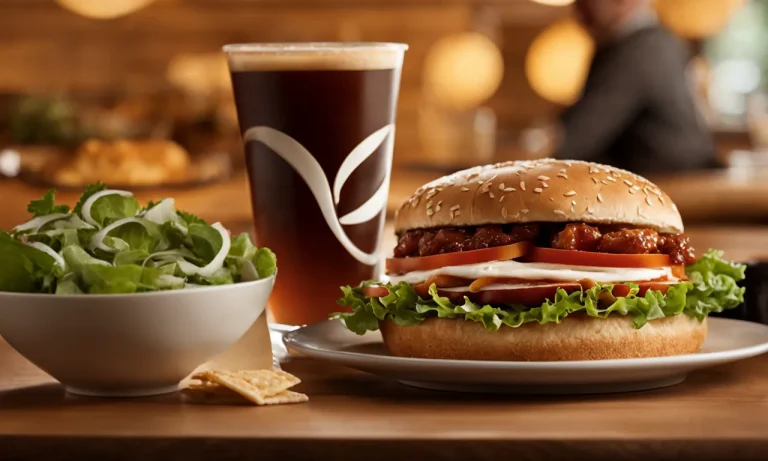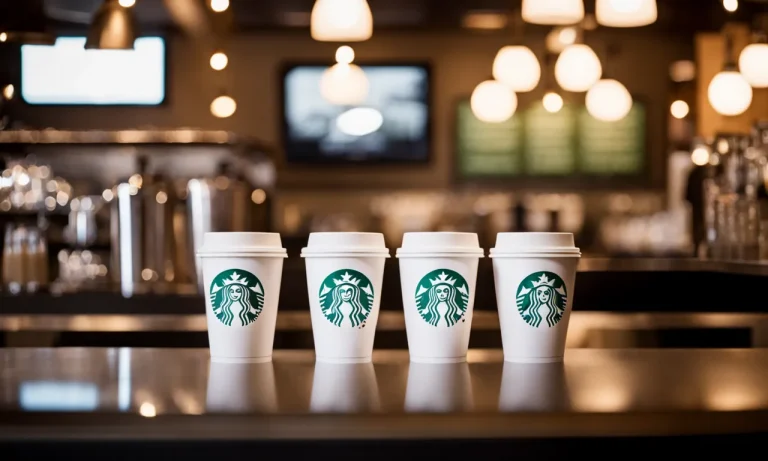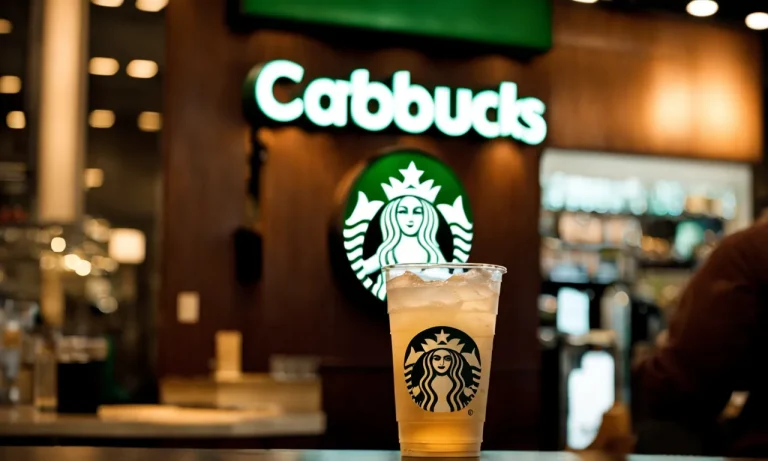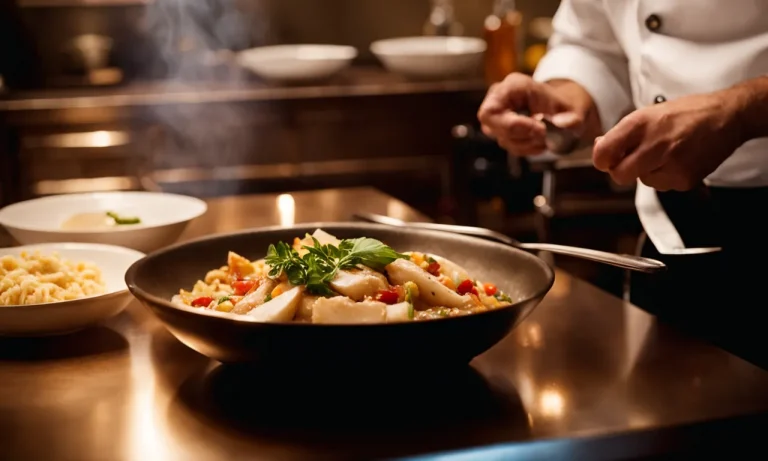Salsa is a delicious dip that can add flavor to chips, tacos, burritos, and more. But if you get salsa from a restaurant, how long will it stay fresh in your fridge? This comprehensive guide will walk you through everything you need to know about the shelf life of restaurant salsa.
If you’re short on time, here’s a quick answer to your question: Properly stored, refrigerated restaurant salsa will stay good for 3 to 5 days after opening.
Factors That Impact How Long Restaurant Salsa Stays Fresh
When it comes to restaurant salsa, its freshness is a crucial factor in ensuring a delightful dining experience. Several factors can influence how long salsa remains fresh, including the ingredients used, acidity levels, and the storage method employed by the restaurant.
Ingredients used
The ingredients used in restaurant salsa play a significant role in determining its shelf life. Fresh and high-quality ingredients, such as ripe tomatoes, onions, cilantro, and peppers, can contribute to a longer-lasting salsa.
These ingredients should be properly washed and handled to prevent any contamination that could lead to spoilage.
Some restaurants may also add preservatives or use commercially produced salsa bases to extend the salsa’s shelf life. While these additives can help prolong the salsa’s freshness, it’s essential to check the ingredient list if you have any specific dietary concerns or preferences.
Acidity levels
The acidity levels in salsa can greatly impact its longevity. Salsa typically contains acidic ingredients like tomatoes, lime juice, or vinegar, which help preserve the salsa by inhibiting the growth of bacteria and other microorganisms.
The higher the acidity level, the longer the salsa can stay fresh.
Restaurants may adjust the acidity levels of their salsa based on their desired taste and preservation needs. It’s worth noting that variations in acidity can also affect the flavor profile of the salsa, so it’s essential to find a balance between freshness and taste.
Storage method
The way restaurant salsa is stored can significantly affect its shelf life. Proper storage methods can help maintain its freshness for a longer period. Restaurants often refrigerate their salsa in airtight containers to slow down bacterial growth and preserve flavor.
It’s important to note that salsa should be stored at the correct temperature. Refrigeration temperatures of 40°F (4°C) or below are recommended to prevent bacterial growth and maintain the salsa’s quality.
Additionally, salsa should be stored away from other potential contaminants, such as raw meats or strong-smelling ingredients, to avoid cross-contamination.
When consuming salsa from a restaurant, it’s always a good idea to check for signs of spoilage, such as a foul odor, mold, or a significant change in color or texture. If any of these signs are present, it’s best to discard the salsa to avoid any potential foodborne illnesses.
Remember, the freshness and quality of restaurant salsa can vary, so it’s important to trust reputable establishments known for their attention to food safety and quality. If you have any specific concerns or questions about the salsa’s shelf life, don’t hesitate to reach out to the restaurant staff for more information.
Signs Your Restaurant Salsa Has Gone Bad
Appearance changes
One of the first signs that your restaurant salsa may have gone bad is a change in its appearance. If you notice any mold growth, discoloration, or separation of ingredients, it’s best to discard the salsa immediately.
Fresh salsa should have a vibrant color and a consistent texture, so any changes in appearance could indicate spoilage.
Texture changes
Another indicator that your restaurant salsa has gone bad is a change in its texture. If the salsa becomes watery, slimy, or grainy, it’s a clear sign that it is no longer fresh. Fresh salsa should have a chunky and smooth consistency, so any textural changes are a cause for concern.
Smell
The smell of salsa can be a great indicator of its freshness. If your restaurant salsa has a foul or off-putting odor, it’s a strong indication that it has spoiled. Fresh salsa should have a pleasant aroma, so trust your nose and discard any salsa that smells strange.
Taste
The most conclusive sign that your restaurant salsa has gone bad is a change in its taste. If the salsa tastes sour, bitter, or has an unusual flavor, it’s best to avoid consuming it. Fresh salsa should have a tangy and savory taste, so any unpleasant or off flavors are a clear indication of spoilage.
It’s important to note that these signs may vary depending on the ingredients used in the salsa and the specific recipe. However, if you observe any of these changes, it’s better to err on the side of caution and discard the salsa to avoid any potential foodborne illnesses.
For more information on food safety and how to properly store and handle salsa, visit the Food Safety website.
Proper Storage for Maximum Freshness
When it comes to restaurant salsa, proper storage is key to maintaining its freshness and flavor. By following a few simple guidelines, you can ensure that your salsa stays delicious for as long as possible.
Keep refrigerated
One of the most important things to remember when storing salsa is to keep it refrigerated. Salsa is a perishable food item that can spoil quickly if left at room temperature. By storing it in the refrigerator, you can extend its shelf life and prevent the growth of bacteria.
According to the United States Department of Agriculture (USDA), salsa should be refrigerated at a temperature of 40°F or below. This will help to slow down the growth of bacteria and keep your salsa fresh for longer.
Store in an airtight container
To further extend the freshness of your salsa, it is recommended to store it in an airtight container. This helps to prevent air from reaching the salsa, which can cause it to oxidize and spoil more quickly.
When choosing a container, opt for one that is made of glass or BPA-free plastic. These materials are less likely to absorb odors and flavors from the salsa, ensuring that it maintains its original taste.
Don’t let dipping utensils touch the salsa
When serving salsa, it’s important to avoid letting dipping utensils, such as chips or spoons, come into direct contact with the salsa. This can introduce bacteria from outside sources into the salsa, increasing the risk of spoilage.
Instead, use separate serving utensils for the salsa and the dipping items. This will help to maintain the integrity of the salsa and keep it fresh for a longer period of time.
By following these storage guidelines, you can enjoy your restaurant salsa for longer and ensure that it stays fresh and flavorful. Remember to always check for any signs of spoilage, such as mold or off smells, before consuming the salsa.
What To Do With Salsa Past Its Prime
So, you’ve found yourself with a jar of salsa that’s been sitting in your fridge for a little too long. Don’t worry, we’ve all been there. While it’s always best to consume food within its recommended timeframe, sometimes things get overlooked.
But fear not, there are still some options for salvaging that salsa and putting it to good use.
Use it up quickly in cooked dishes
One of the easiest ways to use up salsa that may be past its prime is to incorporate it into cooked dishes. The heat from cooking can help to kill off any potential bacteria and give the salsa a new lease on life.
Consider adding it to your favorite chili recipe, using it as a flavor base for a stir-fry, or mixing it into scrambled eggs for a flavorful twist. The possibilities are endless!
Freeze for later use
If you find yourself with more salsa than you can use up quickly, freezing it is a great option. Simply transfer the salsa to an airtight container or freezer bag, making sure to leave some room for expansion. Label the container with the date and contents, and pop it in the freezer.
When you’re ready to use it, simply thaw it in the refrigerator overnight. While the texture may be slightly different after freezing, the flavor should remain intact.
Compost it
If all else fails and your salsa is beyond redemption, you can always compost it. Salsa is made up of organic ingredients like tomatoes, onions, and peppers, which are all great additions to a compost pile.
Just make sure to remove any non-compostable items like plastic lids or labels before adding it to your compost bin. Your garden will thank you!
Remember, while these options can help extend the life of your salsa, it’s always best to use food within its recommended timeframe to ensure safety and quality. If you’re unsure whether your salsa is still good to eat, use your best judgment and when in doubt, throw it out.
Conclusion
With the right storage methods, restaurant salsa can stay fresh in the fridge for 3 to 5 days. Be on the lookout for any changes in appearance, texture, smell, and taste which can indicate it’s time to toss it.
For maximum freshness, keep salsa refrigerated in an airtight container and use clean utensils to scoop it. With this guide’s tips, you can enjoy restaurant salsa without having to worry about it going bad too quickly.






